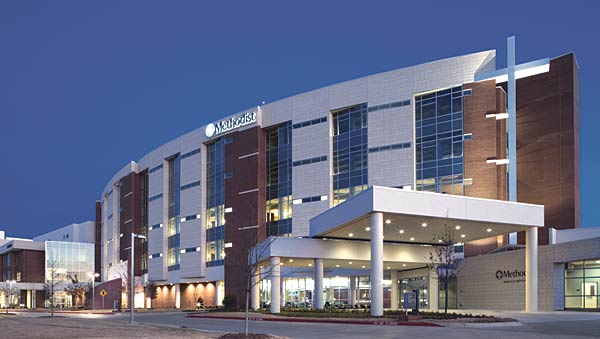The New Age of High-Tech Hospitals
Operating rooms under the knife
The ORs in a new addition at New York City's Memorial Sloan-Kettering Cancer Center opened in May 2006. Designed by architects Perkins Eastman and KMD, with New York IT consultants Shen Milsom & Wilke (SMW), the technology installed in the 21 ORs represents an advanced model of digitally enabled health care. Aside from a PACS system, SMW designed a Digital Video Archival and Communication System (DVACS) that integrates digital video editing, indexing, digital video transport, patient monitoring, audiovisual systems, and various medical systems into a single, time-stamped digital file that could be searched based on spoken word, time parameters, or even something like heart-rate information.
For example, a doctor could review a procedure to pinpoint each time a patient's heart rate exceeded a certain level. Doug Santo, a consultant with SMW, helped develop each OR's Wall of Knowledge, which basically amounts to flat-screen televisions programmed to display things like radiology images, live video of the procedure, endoscopic images, or patient vitals. "In order to collect five physiological monitor feeds and combine them into one digital model is fairly complex," Santo says, adding that expensive software does most of the work.
Â
Â
|
|||||||||
Â
The integrated systems in the ORs at Sloan-Kettering benefited a great deal from a client who knew how to coordinate the needs of both the surgical side and the facility IT side, says Doug Gordon, AIA, with KMD's Portland, Oregon, office. "In my experience, IT has definitely come around to become a more sophisticated part of the hospital's infrastructure, for surgeons and facilities managers," Gordon says.
At Sloan-Kettering, SMW installed a video-only IP network, to keep the huge streams of data from competing with things like e-mail on the regular network. Although this enormous video archive of thoroughly documented procedures opens the hospital to potential liability issues, it is a boon to medical education and to minimizing the need for invasive procedures. This last benefit is significant, as a doctor can now take a biopsy before a procedure and get digital results back quickly enough from a pathology lab that a diagnosis can be made in the OR. In some cases, it can eliminate the need to bring the patient back to the OR and under anesthesia again-which is always a risk-following a later diagnosis. The technology has enabled even further compartmentalizing of responsibilities, as SMW's Santo says some hospitals have electronically transferred radiology images to diagnostic services in India and Australia, to save both time and money. "The technology is just there to help the surgeons do their jobs better," he says.
Â












